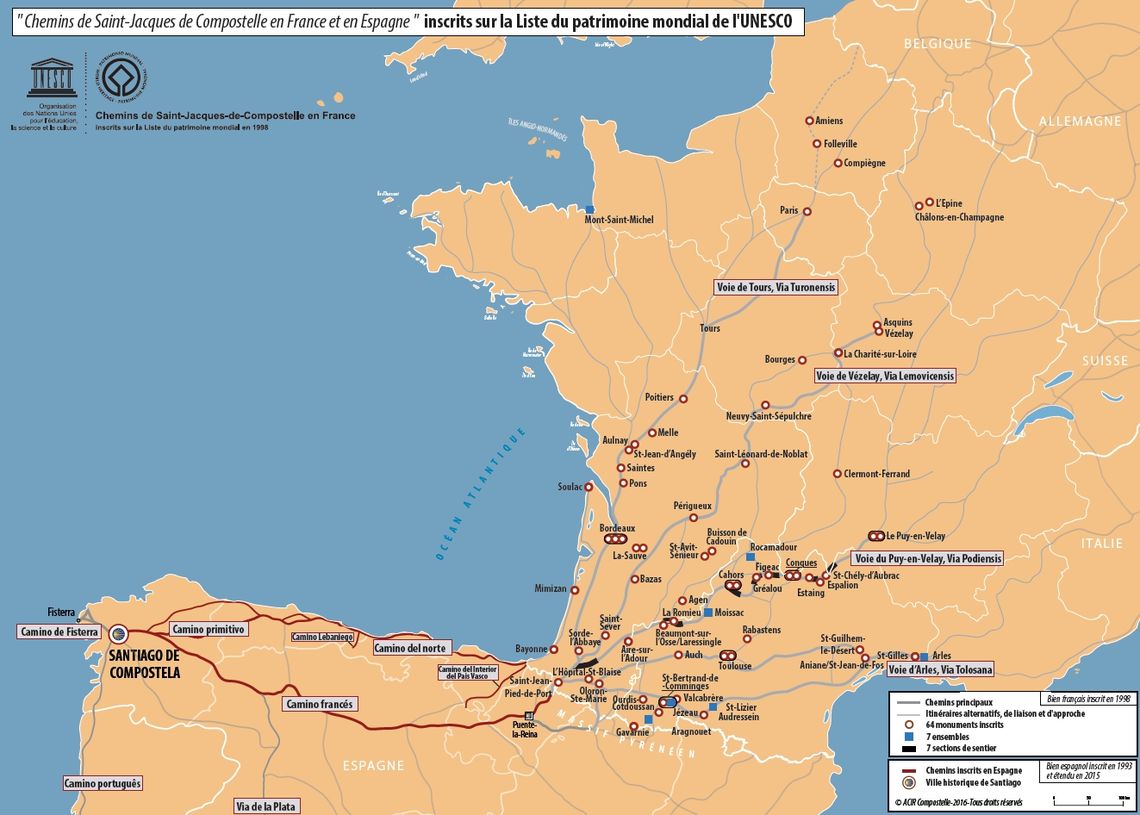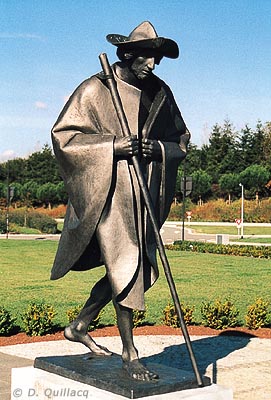Since 1998, the Abbey of Saint-Jean de Sorde has been on the Unesco World Heritage List as part of the Pilgrimage Route to Santiago de Compostela in France.

The Pilgrimage Routes to Santiago de Compostela in France : a serial cultural property
The site Pilgrimage Routes to Santiago de Compostela in France is inscribed on the World Heritage List as a selection of 71 monuments and 7 sections of pathway that bear witness to the spiritual and material aspects of the pilgrimage. Each of these 78 components contributes to the value of the site as a whole by providing a part of significance. Only this ensemble, as such, justifies inscription on the World Heritage List, which implies a joint management supported by a network of owners and managers around a shared project.
These 78 buildings and sections of paths are spread over 10 regions and located on different routes. In the Landes, Sorde Abbey, on the Tours route or via Turonensis, shares this international recognition with three other sites:
- the abbey of Saint-Sever - Vézelay route or via Lemovicensis,
- the bell tower-porch of the ancient church of Mimizan - coastal route,
- the church of Sainte-Quitterie in Aire-sur-Adour - Le Puy route or via Podiensis.
The Abbey of Sorde is a member of the French Agency of the Ways of Compostela.
For more information : The Saint James's ways
An outstanding universal value
Throughout the Middle Ages, Santiago de Compostela was a major destination for countless pilgrims from all over Europe. To reach Spain, pilgrims crossed France. Four symbolic routes from Paris, Vezelay, Le Puy and Arles to the Pyrenees summarise the countless routes taken by travellers. Pilgrimage churches or simple sanctuaries, hospitals, bridges, and crosses mark these routes and bear witness to the spiritual and material aspects of the pilgrimage. Spiritual exercise and manifestation of faith, pilgrimage also affected the secular world by playing a decisive role in the birth and circulation of ideas and the arts.
Extract from the Retrospective Declaration of Outstanding Universal Value adopted by the World Heritage Committee (Krakow, 2017)
Criteria for inscription :
- The pilgrimage route to Santiago de Compostela played an essential role in religious and cultural exchanges and development during the late Middle Ages, as is admirably illustrated by the carefully selected monuments along the piligrimage routes in France.
- The spiritual and physical needs of pilgrims travelling to Santiago de Compostela were eased by the creation of a number of specialised buildings, many of which were created or further developed on the French sections.
- The pilgrimage route to Santiago de Compostela is an exceptional testimony to the power and influence of the Christian faith in all social classes and countries of Europe in the Middle Ages.
The Convention
The World Heritage Convention is an international treaty concluded in 1972 between States and the United Nations Educational, Scientific and Cultural Organization (UNESCO). It defines the natural or cultural sites that deserve to be inscribed on the World Heritage List.
The heritage inscribed on the World Heritage List represents an invaluable and irreplaceable asset for each nation, but also for the whole humanity. Its preservation is an important factor in maintaining the richness and diversity of human cultures and their environment. Action in favour of heritage is part of UNESCO’s approach to promoting a spirit of peace through dialogue between people, beyond their differences.By signing this convention, France has made a commitment to the international community to protect, conserve and enhance the world heritage sites located on its territory and to cooperate internationally to help safeguard the heritage.
In 2022, France had 49 properties inscribed on the World Heritage List : 42 cultural properties, 6 natural properties ans one mixed property out of their 1 157 properties on the World Heritage List.
For more information : UNESCO
A European cultural route
In 1987, the Saint James Way inaugurated the Council of Europe's European Cultural Routes programme. These Cultural Routes demonstrate, through the journey through time and space, that the heritage of different European countries contributes to the common cultural heritage and implements the values of the Council of Europe : human rights, cultural diversity, intercultural dialogue and mutual exchange across borders.

For more information : European Federation of Saint James Way






